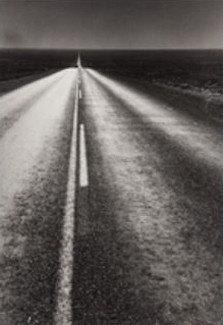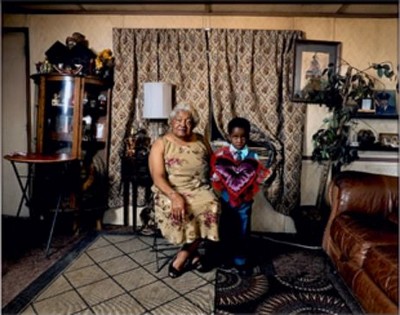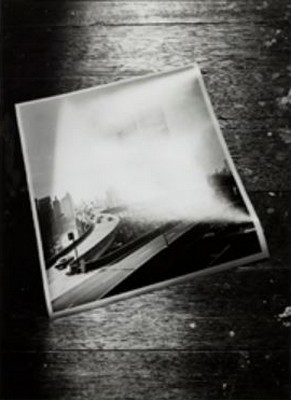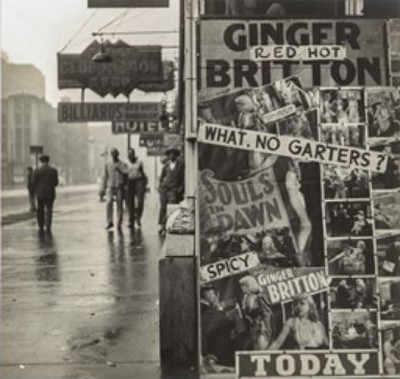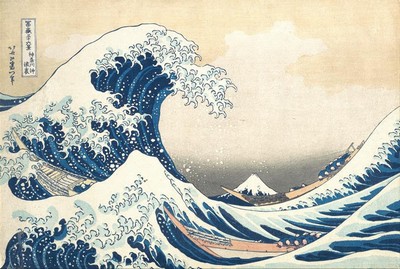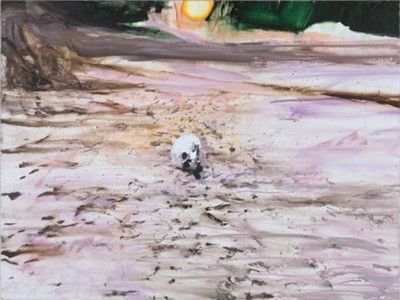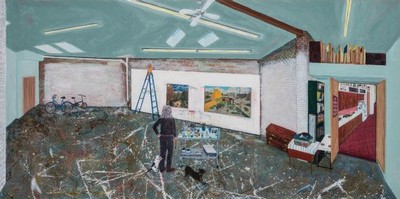Canon EOS R3 - Présentation & Caractéristiques
Image (c) Canon
Image (c) Canon
Image (c) Canon
Canon Europe annonce le très attendu EOS R3 : un hybride de référence pour la photographie de sport et de reportage. Associant l’expertise historique de la marque dans ces domaines et de nouvelles technologies de pointe, l’EOS R3 associe la performance, l’ergonomie et la vitesse exceptionnelles des célèbres Canon EOS-1 à l’innovation et la polyvalence du nouveau Système EOS R.
Développé en intégrant les retours d’expérience de photographes de presse et de sport parmi les plus exigeants, l’EOS R3 affiche plus de 100 perfectionnements par rapport aux boîtiers Canon hybrides et reflex actuels. Le résultat se traduit par un appareil qui rationalise, fluidifie et optimise les flux de production d’images et qui assure un niveau de synergie exceptionnel entre le photographe et son équipement pour une réactivité et une vitesse d’acquisition totalement inédites.
Doté d’un tout nouveau capteur innovant de 24,1 millions de pixels, l’EOS R3 offre un équilibre optimal entre performances, résolution et vitesse afin d’offrir aux photographes un boîtier hybride professionnel ultra-performant aux potentiels uniques face à la concurrence.
Canon EOS R3 - Un avenir toujours plus rapide
Grâce à son nouveau capteur CMOS rétro-éclairé empilé de 24,1 millions de pixels, l’EOS R3 assure des acquisitions d’images avec une vitesse fulgurante et une réactivité exceptionnelle. Ce capteur réduit considérablement la distorsion habituelle due à l’effet de « rolling shutter » , et, grâce à sa vitesse d'obturation ultra-rapide jusqu’à 1/64 000 de seconde1 , il ouvre aux photographes de sport de nouvelles perspectives pour figer les sujets les plus rapides. Avec l’obturateur électronique, ils peuvent également photographier à la cadence de 30 im./sec. avec suivi d’exposition et de mise au point autofocus, même en enregistrement de fichiers RAW, et disposent en option des cadences de 15 im./sec et 3 im./sec. Pour la première fois, l’obturateur électronique peut également être utilisé en photo au flash avec des Canon Speedlite et des flashs de fabricants indépendants. Afin de remédier aux faiblesses habituelles des obturateurs électroniques, Canon a intégré la détection de scintillement et un nouveau mode de prise de vue anti-scintillement à haute fréquence pour détecter et corriger les effets des sources lumineuses vacillantes (lampes led, panneaux lumineux…) sur l’exposition ou la couleur.
La très haute performance de l’EOS R3 en matière de vitesse ne concerne pas uniquement la cadence de prise de vue, elle s'étend également à la mise au point. Capable de faire la mise au point en 0,03 seconde, l'EOS R3 est l'appareil photo de la série EOS R le plus rapide à ce jour2 et s’avère donc excellent pour l’acquisition des actions de sport et de reportage les plus fugaces. L’EOS R3 est doté d'un algorithme d'apprentissage profond amélioré, offrant un suivi AF incluant la détection des yeux, du corps et de la tête des humains et des animaux, ainsi que la détection du visage des personnes en photo comme en vidéo. Canon a développé l’EOS R3 avec l’ambition qu’il soit également très adapté à la photo de sports mécaniques et lui a donc intégré une fonction de suivi des véhicules extrêmement élaborée qui permet de détecter et de suivre très efficacement les motos, les voitures de sport comme les Formule 1, les voitures GT et de rallye, avec la possibilité de donner la priorité au véhicule ou au casque du pilote. La détection des yeux, du visage, de la tête et du corps est désormais disponible dans tous les modes AF, ainsi qu'une nouvelle zone flexible permettant aux utilisateurs de sélectionner la taille et la forme de la zone AF. D’autre part, l’EOS R3 établit une nouvelle référence en sensibilité grâce à sa capacité de faire le point en conditions de luminosité aussi basse que -7,5 IL3 , ce qui en fait l’un des hybrides les plus performants dans le domaine des prises de vues en faible lumière ambiante.
Pour optimiser le contrôle de toutes ces options AF, l'EOS R3 propose trois méthodes différentes pour sélectionner les zones AF : le contrôleur intelligent, rapide, le multi-contrôleur, précis et pilotage AF par l’œil, instinctif. Le pilotage de l’AF par l’œil offre une connexion plus naturelle entre l'appareil photo et le photographe. Cette méthode innovante et intuitive de sélection du point AF à activer consiste à déplacer la zone AF là où le photographe regarde. Dans les situations où l’action se déroule rapidement, cela permet de faire la mise au point instinctivement au bon endroit par la simple action du regard.
Améliorant les capacités de prise de vue à main levée en photo et en vidéo, le stabilisateur d'image 5 axes intégré au boîtier de l’EOS R3 peut fonctionner en association avec le stabilisateur d’image optique des objectifs RF et assure ainsi l’un des meilleurs niveaux de performance du marché avec un effet de stabilisation allant jusqu’à l’équivalent de 8 IL.
Canon EOS R3 - Transmettre plus rapidement et plus facilement
Pour les photographes professionnels qui travaillent essentiellement sur le terrain, le défi n’est pas seulement lié à la vitesse d’acquisition d’image mais aussi à la vitesse à laquelle ils pourront transmettre leurs images aux agences ou rédactions. Avec de nombreuses options de connectivité professionnelle dont le Bluetooth version 5.0 et le Wi-Fi 5 GHz4 , l'EOS R3 rationalise les flux de travail et simplifie la connexion à un smartphone ou à un réseau Wi-Fi. Idéal dans les stades et les grandes salles de sport, le port Ethernet Gigabit intégré permet une connexion câblée à haute vitesse. Et lorsque la rapidité est vraiment essentielle, le photographe peut transmettre des images par FTP. De plus, pour les photographes déjà équipés de boîtiers EOS R55 et EOS-1D X Mark III, les réglages réseau peuvent être partagés entre les trois appareils.
L’utilisateur d’un EOS R3 peut contrôler son appareil à distance depuis un périphérique mobile par l’intermédiaire de l’application Canon Camera Connect ou en utilisant la fonction Browser Remote via une connexion Ethernet. Fonction appréciée de l’EOS-1D X Mark III, Browser Remote permet aussi aux photographes et aux agences de modifier à distance les métadonnées et de visualiser, choisir et télécharger des images. Ils pourront également utiliser l’application Canon Mobile File Transfer (MFT)6 : une application pour mobile destinée aux photographes professionnels qui pourront transférer leurs images par l’intermédiaire d’un périphérique 4G/5G vers un serveur FTP/FTPS/SFTP. De prochains mises à jour de cette application comprendront la conversion de mémos vocaux en texte afin d’augmenter la facilité d’utilisation, ainsi que l’ajout facile de métadonnées à celles de l’EOS R3. Un nouvel accessoire support de smartphone pour l’EOS R3, l’AD-P1 Smartphone Link AD-P1, permettra à l’utilisateur de monter son smartphone iOS ou Android sur l’adaptateur pour griffe Multifonction (la nouvelle griffe porte-accessoires de l’EOS R3) et de transmettre facilement les images via la nouvelle application MFT7 . D’autre part, l’application Canon Camera Connect permettra désormais la mise à jour du firmware de l’EOS R3 par l’intermédiaire d’un smartphone : une première pour un appareil photo EOS.
Canon EOS R3 - Possibilités vidéo incroyables
Comme l’EOS R5, l’EOS R3 répond à la demande des photographes et des vidéastes de pouvoir enregistrer l’action à la fois en photos de haute qualité et en vidéos de haute résolution. Il propose pour cela de puissantes capacités vidéo dont l’enregistrement RAW 6K 60p qui assure la restitution de 50% de détails de plus que la 4K. Avec les fichiers RAW CRM 6K, l’exposition et la balance des blancs peuvent être corrigées après acquisition des images afin d’assurer la restitution d’images exceptionnelles. Les séquences 4K jusqu’à 60p sont sur-échantillonnées depuis la 6K, ce qui garantit la plus haute qualité vidéo 4K possible. Idéal pour les images de sports dynamiques et très rapides, l’EOS R3 enregistre également des séquences 4K à 120p permettant des ralentis de résolution 4K éblouissants. Il est désormais possible d’enregistrer jusqu’à 6 heures de vidéo standard ou 1 heure et demie de vidéo 119.88/1008 p.
Afin de réduire la taille des fichiers et d’accélérer les flux de vidéo, des séquences CRM light ou MP4 peuvent être enregistrées en All-I, IPB ou en IPB light la plus compacte. Ce qui permet aux utilisateurs de choisir parmi une large gamme de débits binaires pour répondre à leurs besoins et à leurs exigences de stockage. Les deux logements pour cartes mémoire dont un pour carte UHS-II SD et un autre pour carte CFexpress à ultra haute-vitesse permettent l’enregistrement vidéo RAW 6K et assurent la possibilité d’enregistrer en MP49 , simultanément sur les 2 cartes pour bénéficier d’une sauvegarde de sécurité des enregistrements de grande importance. Le célèbre Canon LOG 3 en interne sur 10 bits assurant l’obtention d’une dynamique étendue ou l’enregistrement HDR PQ sur 10 bits qui minimise la nécessité d’un traitement d’étalonnage en post-production sont tous deux possibles. Excellent avantage pour les reporters très nomades, l’EOS R3 bénéficie d’une nouvelle griffe porte-accessoires Multifonction offrant davantage de possibilités et de sécurité. Il est d’autre part compatible avec le tout nouveau micro stéréo directionnel DM-E1D, un micro directionnel alimenté par l’appareil photo et bénéficiant du traitement numérique de signal audio, ainsi qu’avec l’adaptateur XLR TEAC Tascam CA-XLR2d-C XLR qui permet l’enregistrement audio sur deux canaux avec des micros XLR professionnels.
Canon EOS R3 - Prise de vues instinctive
Afin de reprendre toute la vitesse et toute l’efficacité ergonomique de la gamme des EOS-1, le tout nouvel hybride de Canon est doté d’un nouveau viseur électronique de haute qualité à 5,76 millions de points, développé par Canon et caractérisé par l’absence d’occultation de visée, par une faible inertie d’affichage et par un taux de rafraîchissement allant jusqu’à 120 im./s en pleine résolution. Autant de caractéristiques qui lui permettent de rivaliser avec les meilleurs viseurs optiques de reflex. Sur ce point, l’EOS R3 bénéficie d’ailleurs d’un nouveau mode de simulation de visée optique qui permet à son viseur électronique d’afficher des couleurs plus riches et de bénéficier d’une dynamique plus étendue. Le temps d’inertie au déclenchement a pu être réduit à la valeur incroyable de 20 ms, soit moins de la moitié du temps de réaction d’un appareil conventionnel, ce qui garantit une acquisition quasi instantanée à chaque pression sur le déclencheur. Le nouvel écran LCD haute résolution de 4,1 millions pixels, orientable et tactile, assure l’affichage de détails pour une qualité de visualisation optimale et apporte une souplesse et un confort inégalés en matière de cadrage depuis les points de vue les plus originaux de par ses multiples possibilités d’inclinaison et de rotation. Associant l'ergonomie EOS existante à de nouvelles commandes et à un certain nombre de nouvelles options de personnalisation, l'EOS R3 offre un contrôle familier, mais avancé. Afin de gagner en efficacité lorsqu’il doit alterner entre plusieurs boîtiers, le photographe pourra facilement copier et sauvegarder des réglages personnalisés sur une carte mémoire pour les charger ensuite sur d’autres boîtiers. En utilisant la même batterie LP-E19 que celle des EOS-1D X Mark II et EOS-1D X Mark III, l’EOS R3 bénéficie d’une grande autonomie en prise de vues et d’une compatibilité appréciable avec d’autres boîtiers reflex professionnels actuels.
L’EOS R3 est basé sur un tout nouveau boîtier monobloc léger, en magnésium, résistant à la poussière et à l’eau, et apte à une utilisation dans des conditions environnementales difficiles. Cette étanchéité ‘tous temps’ est préservée lors du montage d’un flash de la série des Speedlite actuels sur la nouvelle griffe porte-accessoire Multifonction par l’intermédiaire du nouvel adaptateur AD-E1. Autre avantage, le nouveau transmetteur Speedlite compact ST-E10 (qui permet de contrôler des configurations de multi-flash TTL sans câbles) est directement alimenté par l’EOS R3 par l’intermédiaire de cette nouvelle griffe Multifonction.
L’EOS R3 est un appareil hybride ultra-rapide, extrêmement réactif, qui va apporter aux photographes de sport et de reportage l’avantage décisif qu’ils attentent pour réussir de manière encore plus certaine leur quête d’images exceptionnelles.
Canon lance également le RF 100-400mm F5.6-8 IS USM et le RF 16mm F2.8 STM, deux nouveaux objectifs créatifs et polyvalents qui viennent compléter la gamme RF.
Le prix conseillé de l’EOS R3 est de 5 999 € TTC, il sera commercialisé en novembre 2021.
_ _ _ _ _
Caractéristiques principales du Canon EOS R3
- Nouveau capteur CMOS 24,1 millions de pixels, rétro-éclairé, empilé, développé par Canon
- 30 im./s avec suivi AF/Exposition auto
- Gamme de vitesses d’obturation de 30 secondes au 1/64.000 sec. en mode obturateur électronique
- Contrôle de l’AF avec sélection du collimateur par l’œil
- Suivi AF des personnes, des animaux (y compris les oiseaux) et des véhicules de sports mécaniques (voitures et motos)
- Enregistrement de vidéo sur toute la largeur du capteur en RAW 6K 60p, en interne sur carte CFexpress
- Mise au point autofocus avec niveau de lumière jusqu’à -7,5 IL
_ _ _ _ _
1 - En mode obturateur électronique. L’obturateur mécanique assure une gamme de vitesse de 1/8000 sec. à 30 secondes.
2 - À la date du 13 septembre 2021 : pour la vitesse d’AF la plus rapide, *Calculée sur la base de résultats de tests de vitesse d’AF en conformité avec les recommandations CIPA (les résultats peuvent varier en fonction des conditions de prise de vue et des objectifs utilisés). Basé sur la méthode de test interne de Canon. Conditions de test : • Luminosité au moment de la mesure de distance : IL 12 (température ambiante moyenne, 100 ISO) • Mode de prise de vue : mode M • Objectif utilisé : RF24-105mm F4-7.1 IS STM, en prise de vues photo avec action manuelle sur le déclencheur • Mode AF : AF mono-point (central) • Type d’AF : AF One-shot.
3 - Avec un objectif f/1,2 dans les conditions suivantes : collimateur AF central, température ambiante moyenne, AF One-shot, 100 ISO. Ces conditions ne sont pas applicables avec les objectifs RF de type DS.
4 - Le Wi-Fi 5 GHz est également disponible dans certains pays.
5 - Lors d’une utilisation avec le transmetteur sans fil WFT-R10.
6 - La disponibilité de l’app sera annoncée à une date ultérieure (prévue pour le 1er trimestre 2022). Initialement, l’app version 1.3.0 sera gratuite en tant que version d’essai. Les versions suivantes seront payantes.
7 - L’adaptateur griffe Multifonction pour support de Smartphone AD-P1 pour Android et iOS, sera disponible en 2022.
8 - Dépendant du niveau de charge de la batterie, de la carte mémoire et de la température.
9 - Parmi les fonctions compatibles, il y a l’enregistrement séparé de photos, l’enregistrement séparé de photos/vidéo et l’enregistrement vidéo simultané sur 2 cartes.
CANON







